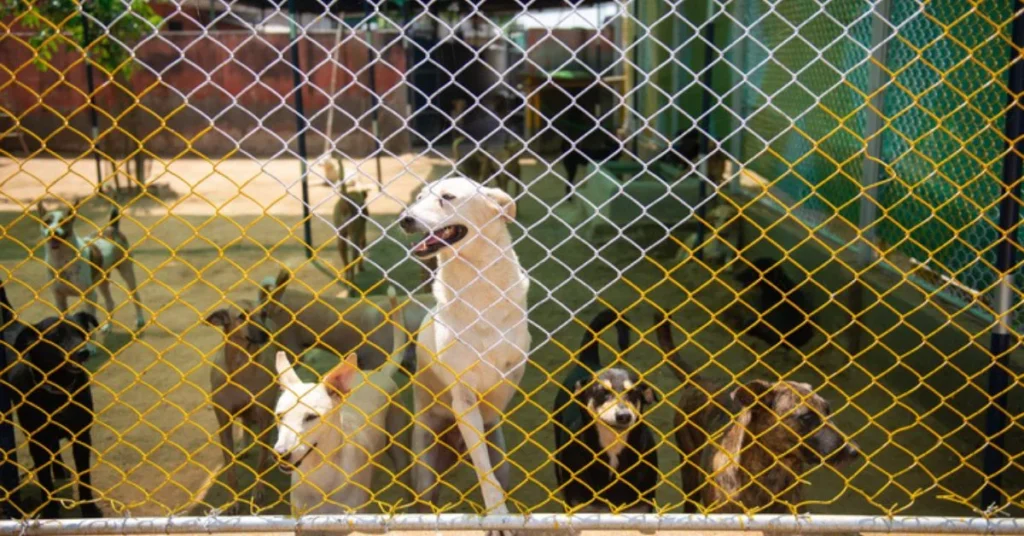In the second installment of this illuminating two-part exploration, we delve into conversations with experts in animal and disease ecology, alongside impassioned animal rights activists. Together, we unravel the intricate tapestry of India’s potential strategies in grappling with the complex issue of street dogs.
Previously, our discourse unfolded upon the burgeoning challenge posed by free-roaming (‘stray’) dogs in the urban landscapes of India. Experts weighed in on the limitations of the Animal Birth Control (ABC) program in curbing their escalating numbers, shedding light on the counterproductive nature of group feeding and street abandonment.
The global perspective on street (stray or free-roaming) dogs paints a diverse canvas, distinctly different from India’s narrative. Some countries in Asia and Africa, for instance, engage in the consumption of dog meat, with estimates suggesting a staggering 30 million dogs meet this fate annually in Asia alone.
Dr. Ramanath Jha, a Distinguished Fellow at the Observer Research Foundation, aptly notes the dichotomy between dog lovers in the Western world and regions where dog meat consumption is prevalent. Western nations, he points out, have invested significantly in fostering the companionship of pet dogs through the provision of various amenities.
Contrastingly, the United States adopts stringent measures, requiring dogs to be owned or removed from the streets and confined in dog pounds. Here, a narrow adoption window exists, after which dogs face euthanasia to accommodate the continuous influx of strays.
India’s stance on stray dogs leans towards compassion, allowing them to roam freely and be cared for on the streets—a policy that Dr. Abi T Vanak, an animal ecologist and conservation biologist, deems as leading to unnecessary suffering. He argues that the Animal Birth Control rules contradict the Prevention of Cruelty to Animals (PCA) Act of 1960. This irony stems from the fact that the rules were formulated under the PCA Act, which permits the “destruction of stray dogs in lethal chambers.”
Dr. Vanak raises a crucial point, questioning the compatibility of rules that seemingly prohibit an action expressly allowed by the PCA Act. Moreover, he emphasizes that the PCA Act does not recognize a category termed “street dogs,” and by mandating their presence on the streets, the rules inadvertently permit avoidable suffering, a violation of the very essence of the Act.

Meghna Uniyal, the trailblazing director and co-founder of the Humane Foundation for People and Animals, joins the chorus in asserting that the ABC Rules seem to dance to a different tune than the harmonies of the Prevention of Cruelty to Animals Act.
In her insightful observations, Uniyal emphasizes, “The Prevention of Cruelty to Animals Act stands as a staunch defender against animal homelessness and forsakenness. It mandates not only the provision of shelter but also, when necessary, the humane euthanasia of unowned and stray dogs. In stark contrast, the ABC rules cast these animals into the harsh reality of street life.”
Uniyal digs into the layers of complexity, stating, “The ABC Rules introduce an unconventional classification, labeling them as ‘street/community’ dogs—a category conspicuously absent in the parent Act or any other legal framework. These rules effectively condemn unowned dogs to a life of homelessness, exposing them to diseases, accidents, and conflicts without the protective embrace of shelter. It’s paradoxical that while the PCA Act penalizes the abandonment and suffering of animals, the ABC Rules seem to turn a blind eye to such plight.”
The natural question arises: Why hasn’t the judiciary, particularly the Supreme Court, stepped onto this stage to rectify the dissonance? Uniyal sheds light on the ongoing legal drama, revealing, “The Supreme Court is presently enmeshed in the adjudication of multiple cases challenging the legality and constitutionality of the ABC Rules.” The unfolding legal saga adds an intriguing chapter to the narrative, presenting the prospect of justice reshaping policies that govern the well-being of our cherished four-legged companions.

Unlocking Answers
Navigating this intricate challenge offers no simple solutions; it’s a puzzle with multifaceted dimensions. However, dissecting the issue into two distinct realms—urban dogs and rural dogs—provides a more manageable perspective.
In rural landscapes, where many dogs are privately owned or associated with specific households, Dr. Vanak proposes a comprehensive approach. Engaging with gram panchayats and villagers, implementing educational programs, and advocating for improved health practices can create a foundation. Collaborating with government bodies to administer free vaccines becomes a vital strategy, particularly to combat rabies. Moreover, empowering villagers to address the presence of free-ranging dogs not belonging to local residents or communities can significantly alleviate the issue. Dr. Vanak suggests that if conflicts arise, villagers have options, including sheltering, adoption, or humane euthanasia for dogs that are elderly, ailing, or disease carriers—a holistic approach to managing India’s free-ranging dog population.
The decision to euthanize a stray dog, or any animal for that matter, is acknowledged as a complex ethical dilemma. The World Society for the Protection of Animals (WPA) views euthanasia as acceptable and necessary under specific circumstances, such as incurable illness or presenting a significant risk to human or animal safety. India’s ABC Rules (2023) strictly regulate euthanasia, permitting it only for dogs diagnosed as “incurably ill and mortally wounded” by a committee appointed for this purpose.
Contrasting perspectives emerge from organizations like the Royal Society for the Prevention of Cruelty to Animals (RSPCA), which deems euthanasia acceptable only in certain circumstances, like when an animal is not re-homeable due to sickness, injury, behavioral issues, or a lack of appropriate homes.
Examining methods of euthanasia adds another layer to this complex narrative. The Canadian Veterinary Medical Association emphasizes the importance of using humane methods that minimize fear, pain, and distress. The World Animal Protection advocates for the intravenous injection of a specific solution, ensuring a rapid loss of consciousness followed by cardiac arrest as the best practice for euthanizing dogs.

Enforcing Stringent Regulations
“In the bustling tapestry of urban living, a call echoes for a canine code of conduct, urging a rethink on how we coexist with our four-legged companions. Advocating for a canine code, one voice asserts, ‘If the heart desires a pet, let the home embrace it. Should a yearning arise to care for street dogs, let those tails wag within the sanctuary of our abodes. The streets, bustling with life, are no place for impromptu doggy feasts or midnight snacks. A policy, firm as a determined paw, must discourage the act of turning sidewalks into doggie diners. And let’s not forget the global harmony of pet licenses and registrations; why reinvent the wheel when the world’s symphony is already playing?’
Yet, amid the urban hubbub, Vasundhara Anand, the co-founder of KVAAB Welfare Foundation, paints a different mural. “In today’s world, myths surround the dogs of the community, shrouding them in unwarranted hysteria. Regular meals transform these street denizens into refined connoisseurs, eschewing the need to sift through trash bins. A well-fed dog is a docile one, and once the neighborhood acknowledges the custodianship, harmony reigns. It’s a transformative cycle; less aggression, fewer altercations. Neutering adds the finishing stroke, tempering their fiery spirits.”
“Picture this,” she enthuses, “A twilight stroll through Central Delhi, a locale adorned with 120 dogs. Post 8 pm, the streets are a canine ghost town—bellies full, spirits high, and tails playing hide-and-seek beneath parked cars. These aren’t vagabonds; they are community artists painting the town with their presence. Small businesses and neighborhoods, consider this a canvas—adopt, don’t abandon. Let the streets echo with shared tales, not lonely howls.”

In the grand theater of urban harmony, Dr. Aniruddha Belsare, the virtuoso of disease ecology at Auburn University, takes center stage to compose a sonnet of responsible pet ownership. “Owning a pet is a sweet serenade, but it demands a ballet of responsibility. Neuter and vaccinate, be a vigilant guardian, serve a feast, and most importantly, choreograph a cleanup after the furry performers. To feed neighborhood dogs without orchestrating a cleanup is a discordant note, a howl of cruelty,” he proclaims.
But why this emphasis on a responsible concerto? Dr. Vanak illuminates the shadows, “Beyond the wagging tails, dogs weave a tale of potential health hazards. Parasitic worms, stealthily tucked in their feces, sneak into our surroundings—open drains, lakes, and more. With millions of dogs leaving their mark on the streets, it’s not just a messy mural; it’s a public health masterpiece.”
To tame the wild symphony of dog attacks, the prescription is clear—diminish the packs. Dr. Vanak unfolds the musical score, “In the grand symphony, large packs, spawned from mass feeding, are the epicenters of discord. Shrink the size, shrink the risk.” (As eloquently detailed in Part 1.)
For those navigating the intricate dance of street feeding with a passion for canine welfare, the solution beckons towards a visionary crescendo. “Do you dream of streets free from wandering paws? If so, compose the melody for easy adoption and registration, sponsor the aspirations of those dreaming of shelters, and empower those wishing to feed publicly to establish their own sanctuaries. An urgent government overture is the call,” Vanak beseeches.
In the grand finale, recognizing the financial crescendo, he adds, “Sheltering may be a pricier note, but it is the overture to vanquishing the problem. The ABC program merely conducts a temporary interlude. To genuinely serenade our four-legged companions, let’s choreograph their exit from the streets. Raise the curtain on shelters; rescue those with a history of aggression, offering them a lifelong sanctuary or the dignity of humane euthanasia, sparing them the discord of the streets.” The symphony of responsibility and compassion plays on, a unique composition in the urban sonnet.

In the intricate dance of compassion for our four-legged friends, Huma Hazarika Sharma, an independent rescuer of stray animals hailing from Delhi, injects a note of reality into the symphony of shelters. She contends that many existing shelters, conceived with noble intentions, now languish in deplorable conditions, primarily catering to sick and injured dogs.
“While these shelters embark with noble intentions, unfortunately, many lose their sense of purpose along the journey. Designed for sick and injured dogs, some shelters become breeding grounds for diseases like distemper and parvo. Healthy, unvaccinated dogs sent there can become unwitting victims, and those with compromised immunity may face a dire fate. These shelters are not the haven for the hale and hearty,” she passionately argues.
The apparent remedy, she suggests, is to diversify the canine sanctuaries. However, a more disconcerting revelation follows, “Regrettably, many shelters fumble in the rehabilitation of street dogs. Witnessing videos of emaciated dogs being fed stale rotis at these shelters is disheartening.”
Turning the spotlight on regulatory frameworks, she invokes the Prevention of Cruelty to Animals Act, pointing out the lapses of the Animal Welfare Board of India (AWBI) in setting up and overseeing shelters. “They’ve faltered in their duties. With their hands tied, should we abandon these dogs to the streets? The government should wield its power to revoke the registration of NGOs failing in maintaining proper dog shelters. Fines under the PCA Act and potential incarceration should be the tune,” asserts Vanak.
On the bureaucratic stage, Vanak underscores the need to empower municipal authorities, emphasizing that proper funding is the key to orchestrate meaningful change. The composition of compassion and responsibility continues, a nuanced melody seeking a harmonious resolution.

Navigating a Public Interest Matter
In the intriguing legal saga involving our four-legged companions, May 2022 witnessed the Delhi High Court recognizing the right of stray dogs to sustenance and citizens’ entitlement to nourish community dogs.
Fast forward to October 2022, and the Nagpur bench of the Bombay High Court took a contrasting stance, decreeing a ban on feeding stray dogs. This directive urged authorities, including the police, to take resolute action against those impeding efforts to tackle the stray dog issue. The court mandated that individuals keen on feeding stray dogs must formally adopt, register, and responsibly care for them. Alternatively, these benevolent souls could opt to place the strays in shelter homes.
November 2022 brought a legal twist, as three women from Nagpur brought the matter to the Supreme Court, challenging the Bombay High Court’s ruling. Dr. Ramanath Jha sheds light on the argument: “The petitioners contended that the High Court order infringed upon the rights of street dogs and contradicted statutory provisions and previous Supreme Court rulings. Feeding stray dogs was not prohibited by any legislation, and it was not a penal offense under any statute.”
The Supreme Court, in a temporary reprieve, stayed the High Court order and directed municipal authorities to designate suitable areas where the public could continue feeding stray dogs. Notably, only specific aspects of the Bombay HC order were stayed—specifically, the requirement for dog feeders to adopt all the dogs they fed and potential fines for their benevolent acts.
Unfolding like a legal drama, the case persists. In the latest development, the Nagpur bench urged the municipality to fulfill its obligations under the State Municipal and Police Act to safeguard citizens from stray dog attacks. A delicate balancing act ensues, with the apex court emphasizing that while the Municipal Corporation must address concerns related to ferocious and aggressive stray dogs, the public must also ensure that feeding does not inadvertently contribute to public nuisance. The legal canvas continues to be painted with intriguing hues.

In the legal chronicles of stray dog debates, Uniyal highlights, “Since 2009, the Supreme Court has been entangled in hearings related to the stray dog conundrum.
Presently, multiple benches are delving into cases concerning the ABC Rules 2001, stray dog feeding, and ABC Rules 2023. While a matter is under consideration, the court maintains a status quo, yet, just this month, the apex court intervened by staying a Bombay High Court order that endorsed the ABC Rules 2023 and sanctioned the release of stray dogs into a residential society in Pune.”
The court’s stance on stray dogs has traditionally leaned towards empathy and benevolence, as Uniyal points out. But, a lingering question remains: is this compassion perhaps misplaced? The unfolding narrative promises an intriguing denouement as we await the Supreme Court’s final pronouncement on the matter.
The apex court’s judgment holds the key to unraveling the path India will tread in addressing the stray dog issue. In this legal tapestry, the Supreme Court’s forthcoming decision is poised to bring a definitive clarity, shaping the trajectory of compassion and legal regulation in the realm of stray dog welfare. The courtroom drama continues, and the final act awaits its cue.
